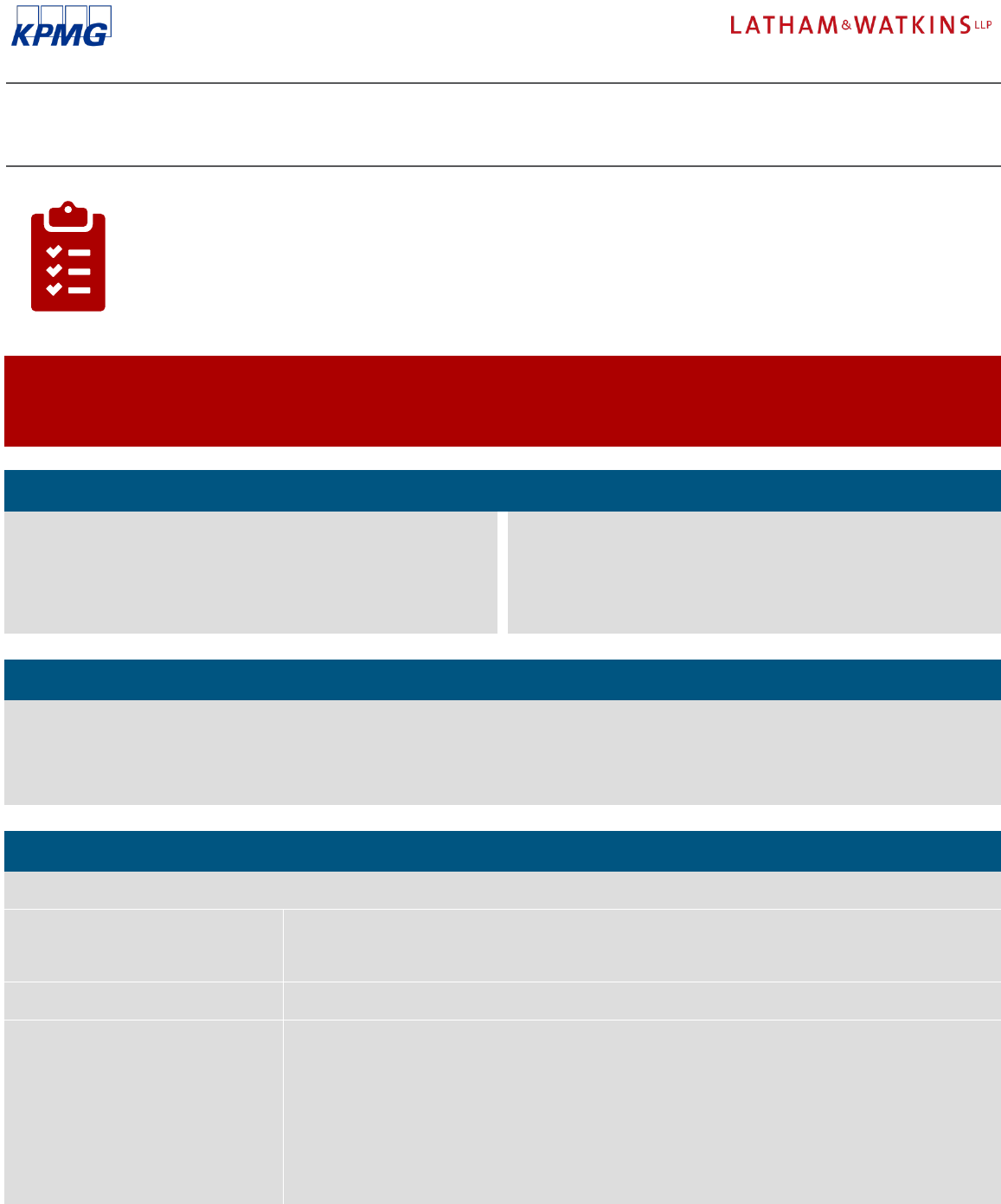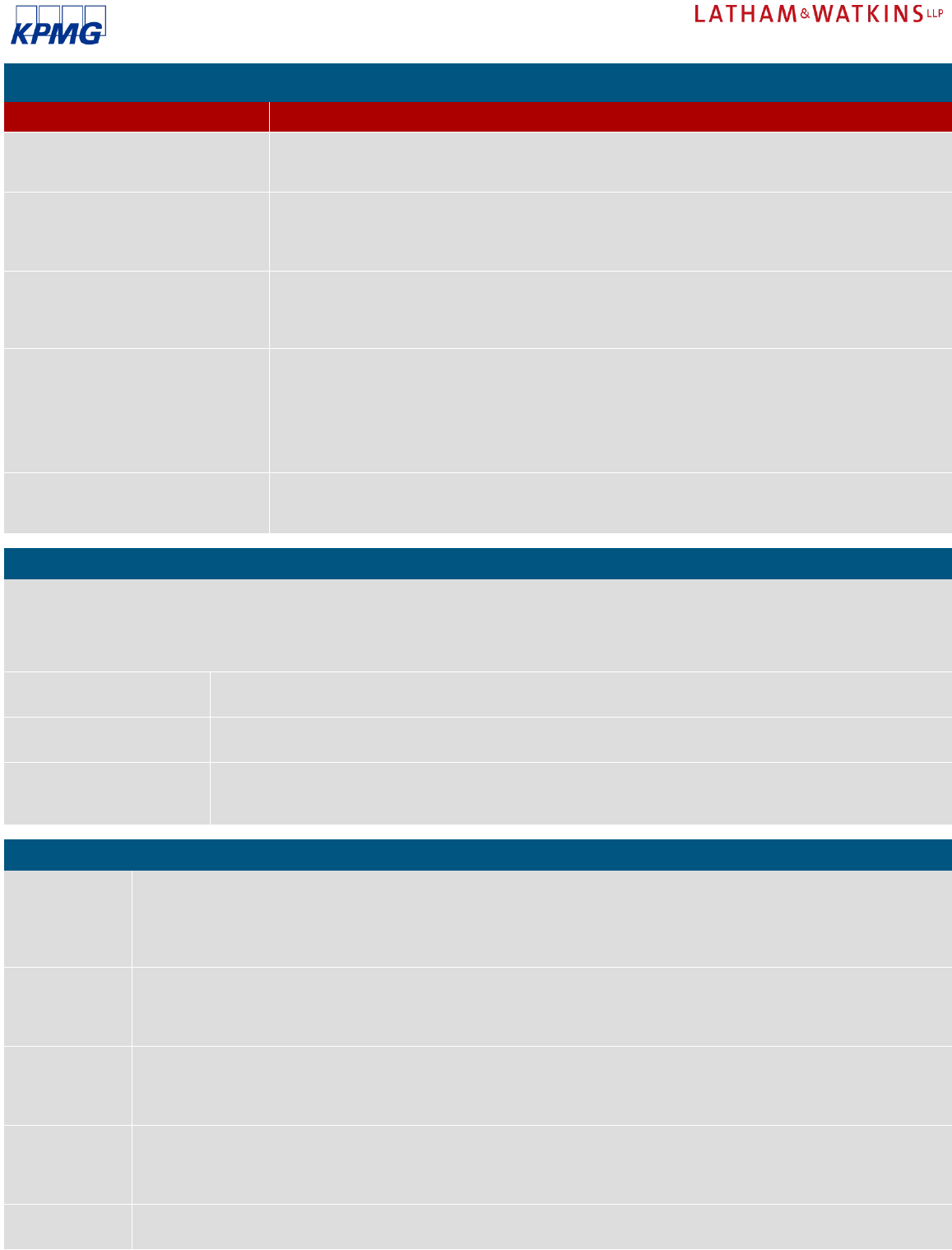
WHEN DO YOU NEED ACQUIRED BUSINESS FINANCIAL DISCLOSURES
IN A PROSPECTUS UNDER THE SEC’S RULES?
GENERAL RULE: Your prospectus must include (or incorporate by reference) financial statements for a significant
acquisition of a business that has closed 75 days or more before the offering. Significant means above 20% on any
of the three tests described below. The 75-day grace period does not apply for recently closed acquisitions above the
50% significance level, so financial statements will generally be required. For probable (not yet closed) acquisitions
below the 50% significance level, financial statements will not be needed; by contrast, above 50% they will generally be
needed. In every case where target financial statements are required, you will also need pro forma financial
information.
If the answer to both of the questions below is “yes”:
Is the target a “business”?
Is the target a separate product line, operating unit, division,
subsidiary, or business entity?
Will there be significant continuity of the target’s operations
compared to before the transaction?
Is the transaction either completed or “probable”?
Is there a binding purchase agreement or signed LOI?
The “probable” inquiry is fact-specific. Bear in mind industry and
issuer-specific considerations.
You will need the answers to these questions:
What is the acquiror’s investment, which equals consideration transferred (i.e., GAAP purchase price)?
What is the aggregate worldwide market value of the acquiror’s voting and non-voting common equity, or book value of total assets, if the
acquirer does not have publicly traded securities?
What are the total revenues and the pre-tax income of the target and the acquiror for the most recent fiscal year?
To test whether the acquisition is “significant” under the SEC definition (S-X Rules 3-05 and 1-02(w)):
An acquisition is significant if any of the following three tests > 20%:
Investment Test The amount of the acquiror’s investment in the target compared to the aggregate worldwide market value of
the acquiror’s common equity; if worldwide market value is not available, the amount of the acquiror’s
investment in the target compared to the acquiror’s total assets.
Asset Test The consolidated total assets of the target compared to the acquiror’s consolidated total assets.
Income Test
o Must test both components
where applicable
o Both components must exceed
20% to trip significance
threshold
o The lower of these amounts
determines which financials are
required below
Net income component: The target’s income from continuing operations before income taxes and
cumulative effect of a change in accounting principles (after intercompany eliminations) (“pre-tax
income”) compared to the pre-tax income of the acquiror for the most recent full fiscal year. Absolute
values should be used to calculate net income.
Revenue component (where acquiror and target have recurring annual revenue): The acquiror’s share of
the target’s consolidated total revenues (after intercompany eliminations) compared to acquiror’s
consolidated total revenues for the most recent full fiscal year.
Note: in the case of a probable or recently closed acquisition that is above the 20% significance level but less than the 50%
significance level, marketing and/or disclosure considerations may lead to the inclusion of acquired company financial statements
(and related pro formas) even before the expiration of the 75-day grace period. This is a case-by-case analysis.
© 2021 Latham & Watkins. All Rights Reserved.
Latham & Watkins operates worldwide as a limited liability partnership organized under the laws of the State of Delaware (USA) with affiliated limited liability partnerships conducting the practice in France, Hong Kong, Italy, Singapore, and the United Kingdom and as
an affiliated partnership conducting the practice in Japan. Latham & Watkins operates in South Korea as a Foreign Legal Consultant Office. Latham & Watkins works in cooperation with the Law Office of Salman M. Al-Sudairi in the Kingdom of Saudi Arabia.
© 2021 KPMG LLP, a Delaware limited liability partnership and a member firm of the KPMG global organization of independent member firms affiliated with KPMG International Limited, a private English company limited by guarantee. All rights reserved. The KPMG
name and logo are trademarks used under license by the independent member firms of the KPMG global organization. The information contained herein is of a general nature and is not intended to address the circumstances of any particular individual or entity.
Although we endeavor to provide accurate and timely information, there can be no guarantee that such information is accurate as of the date it is received or that it will continue to be accurate in the future. No one should act upon such information without appropriate
professional advice after a thorough examination of the particular situation.

If significant, you will need to include the following financial disclosures in your prospectus:
Basic Scenarios
Historical Financial Statements Required
Individual acquisition (or multiple
acquisitions of related businesses) of
20% significance or less
No separate financial statements needed.
Individual acquisition (or multiple
acquisitions of related businesses) of
greater than 20% significance but less
than 40% significance
Audited financial statements for the most recent fiscal year of the target must be included. Unaudited
interim financial statements for the most recent stub period may also be needed, subject to staleness rules.
No comparative period is required at this significance level. An acquiror may omit separate financial
statements of a target that has been included in its post-acquisition results for nine months.
Individual acquisition (or multiple
acquisitions of related businesses) of
greater than 40% significance
Audited financial statements for the two most recent fiscal years of the target must be included.
Unaudited interim financial statements for any stub period (together with the comparative period from the
prior year) may also be needed, subject to staleness rules. An acquiror may omit separate financial
statements of a target that has been included in its post-acquisition results for one year.
Multiple acquisitions of unrelated
businesses that are < 20% significant
individually or for which financial
statements are not yet required
because of the 75-day filing period,
aggregating more than 50%
significance on a combined basis
Audited financial statements for the most recent fiscal year will be required for businesses whose
individual significance exceeds 20% but for which historical financials are otherwise not yet required
because of the 75-day grace period. Unaudited interim financial statements for any stub period (together
with the comparative period from the prior year) may also be needed, subject to staleness rules.
Acquisitions of related businesses
Related businesses are treated as a single business when measuring significance. If significance under S-X
Rule 3-05 is met, separate financial statements for each of the related businesses (or combined financial
statements, if appropriate under GAAP) will be required.
Pro Forma Financial Information Required:
Where historical financial statements of the target are required, pro forma financial information complying with S-X Article 11 must also be included.
The pro forma information must include adjustments that are required by GAAP to account for the transaction and also to show the acquiror as an
autonomous entity when it was previously part of another entity. The pro forma information may include management adjustments to include forward-
looking information (e.g., synergies and dis-synergies that would, in management’s opinion, enhance an understanding of the pro forma effects of the
transaction). Article 11 requires:
A condensed pro forma
balance sheet
As of the end of the most recent period for which a consolidated balance sheet of the acquiror is required, unless
the transaction is already reflected in that balance sheet.
A condensed pro forma
income statement
For the acquiror’s most recently completed fiscal year and the most recent stub period of the acquiror, unless the
historical income statement reflects the transaction for the entire period.
Multiple acquisitions of
unrelated businesses
(defined above)
Pro forma financial information for individually insignificant businesses aggregating more than 50% significance on a
combined basis depicting the aggregate effects of all such businesses in all material respects (even where separate
historical financial statements of the individual businesses are not required).
Certain Situations and Industry Considerations:
Using pro
forma
financials
to test
significance
An IPO issuer may use pro forma financials to measure significance for acquisitions consummated in the most recent fiscal
year. It will need to continue to use pro forma financials until the next Form 10-K. A serial acquiror may be able to use pro forma
financials that are more recent than its most recent audited financials for purposes of calculating significance in certain
circumstances. In both cases, this can be useful where the pro forma information produces a larger “denominator” for testing
significance.
Shelf
takedowns
The rules for shelf takedowns are generally the same as those for new registration statements. However, in certain
circumstances, such as a purely secondary offering or in the absence of a “fundamental change,” it may be possible to conduct
an offering using an existing shelf without providing historical financial statements for probable or completed acquisitions that
exceed the 50% significance level.
Acquisitions of
Oil and Gas
Properties
Producing oil and natural gas properties are considered to be a business under S-X Rule 11-01(d). Abbreviated audited financial
statements may be provided in the form of a statement of revenues and direct operating expenses if substantially all of the
revenues of the business are from oil-and-gas producing activities and the total assets and revenues of the acquired business are
20% or less of the corresponding amounts for the seller for the most recently completed fiscal year.
Real estate
operations
Significance tests and disclosure requirements for real estate operations acquired or to be acquired under S-X Rule 3-14 have
largely been harmonized with Rule 3-05. In particular, the threshold at which audited and unaudited abbreviated income
statements (i.e., statements of revenue and certain expenses) must be provided for any “significant” acquisition has been raised
from 10% of the acquiror’s total assets to 20% of the aggregate worldwide market value of the acquiror’s common equity or more.
Rule 144A
offerings
Since the public offering requirements are only applicable to Rule 144A offerings by analogy, exceptions may be appropriate
in some circumstances. This will be a case-by-case analysis.
